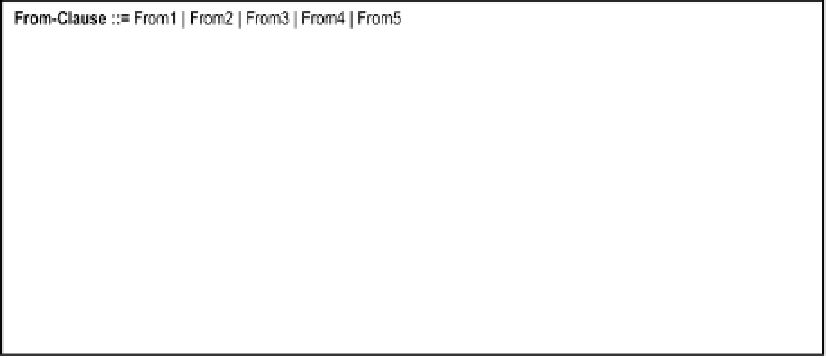Database Reference
In-Depth Information
Note:
1.
The plus sign indicates that rows from the implied relation
may have null values (or non-matching values) for the
attribute of interest; these rows should be included. If the plus
sign is on the right, we have a
left outer join
; if the plus sign is
on the left, we have a
right outer join
.
2.
Using this approach, you can have the parenthesized plus
sign (+)on either but not both sides of the join condition. This
means that you have a left outer join, a right outer join, but
not a full outer join. To obtain a full outer join, you have to
take the union of a left outer join with a right outer join.
3.
Left outer joins means take all rows from the table on
the left; right outer join means take all rows from the table
on the right.
12.7.2 The ANSI Method
Oracle 10g supports the more newly introduced ANSI syntax for handling queries from
multiple tables. With this new syntax, the
From-Clause
is modified so that you are
forced to explicitly specify the join. The syntax for the modified
From-Clause
is shown
in Figure
12-6
.
Figure 12-6.
Modified From-Clause for ANSI Join










